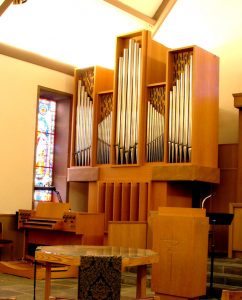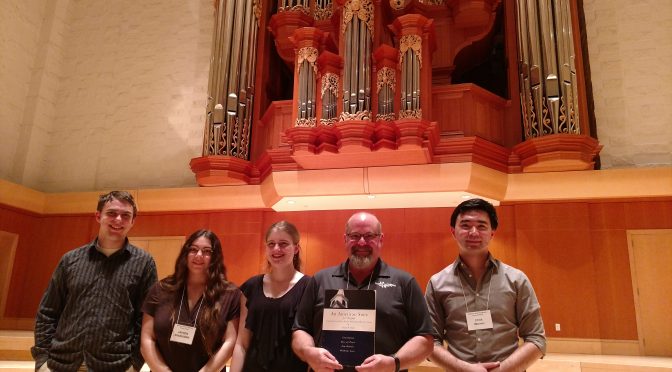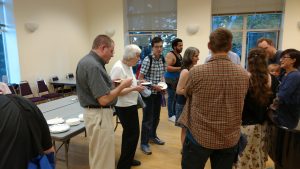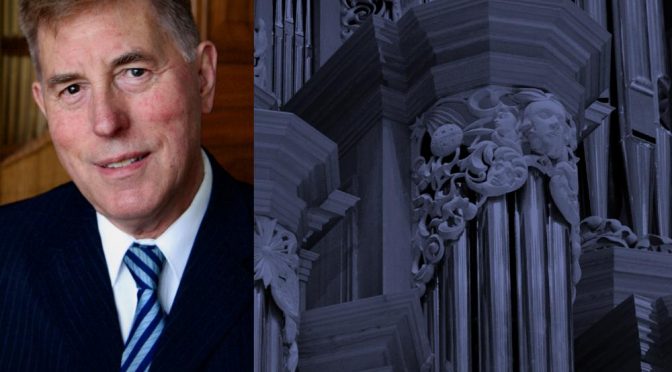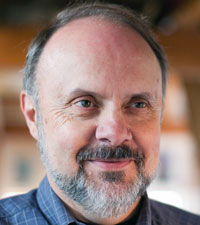In spite of my advancing age, and in defiance of such stereotypes, I embrace technology. I cannot be accused of resisting change. I live in a (mostly) smart house. I write much of the code that drives it. I am never more than a few feet from my smart phone. When something new appears on the technological scene, I feel compelled to buy it. I have no fear of early adoption and have a deep appreciation for technology that saves me time or money or improves my life in some other way.
Yet I am deeply disturbed by the trend to accept “electronic organ-like devices” as equivalent to real organs. A real organ is a wind instrument, in a case, played by a keyboard through mechanical means. A real organ has a case, pipes and trackers. It cannot be duplicated by technology.
When Fenner Douglass was attempting to persuade the board of directors of Carnegie Hall to buy a real organ, he asked Isaac Stern, “How would you feel about cutting your violin in half, and connecting the two halves with electrical cable so that the sound would come from the other side of the stage?”
It is, of course, an absurd proposal. Yet that is exactly what we have allowed to happen to organs. Taking the analogy one step further, we have replaced those violin strings with tone generators and the violin case with speakers. How many violinists would willingly play such a musical abomination?
There are many strong and well known musical justifications for real organs. A player who is pressing keys attached to pallets receives mechanical feedback that is missing or distorted when playing against a spring or haptic device. A player sitting at the source of the sound receives strong audible feedback that is missing when the source is far away. Pipes sounding from a common wind source reflect small changes in pitch and intensity when other pipes sound. A carefully, and often beautifully, carved case with pipe shades serves to blend and focus the sound in a way that isn’t possible with speakers.
Why, then, are we being asked to accept electronic devices as equivalent to real musical instruments? Like most motivation, it’s financial, of course. Manufacturers of electronic devices have put a lot of money into marketing. They sponsor concerts, pay for dinners, purchase expensive advertisements. They persuade editors to put their latest devices on the front covers of national organ magazines. They have managed to create an environment of political correctness in which it is somehow considered discriminatory to treat electronic devices as second class citizens.
We need to resist! What will be the endpoint if we don’t? We will leave a world without organs for future generations. Our professional organization will have failed.
What can we do as individuals? If you subscribe to a magazine or journal that features an electronic device on the cover, let the editor know that you don’t like it. If you work for a church with an electronic device, push for a change. When your friend who goes to a church with one asks you what you think of it, be truthful. You can always make new friends.
Our chapter has a treasure that few others can boast–two internationally renowned organ builders who build–you guessed it–real organs. We schedule events at their shops on a regular basis. Next time that happens, invite your friends. They don’t have to be church organists to make a difference. You never know which of your friends might end up on a music committee. We have at least four concert series on real organs built by artists who are members of our chapter or have close ties to our chapter–Pacific Lutheran University, Christ Episcopal Church, St. Andrews Episcopal Church, and University of Puget Sound. Attend those recitals and take your friends.
While you and your friends are waiting for the concert to begin, spend a few minutes talking about the art of organ building–the case, the pipes, the keyboards, and the trackers. Point out how fortunate we are in this area to have so many fine organs and organ builders. Let them know that real organs belong in concert halls and churches. Appliances belong in the kitchen.
